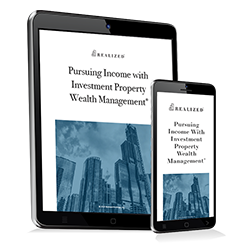
If you’re like many in the workforce (as either an employee or a business owner), the chances are pretty good you’ve set up some kind of defined contribution plan for your retirement years. During each pay period, you’ve contributed a certain amount from your earnings to that plan, and maybe you’re taking comfort in seeing that balance grow.
But the monies in that plan don’t sit there indefinitely. At some point, what goes in must come out. Specifically, you’re required to start withdrawing from your defined contribution plan during the year in which you turn age 72, whether you’re actually ready to retire or not. This is known as the required minimum distribution, and failure to make those withdrawals could result in hefty tax penalties.
By the Numbers
The RMD is in place for the following defined contribution plans:
- Savings Incentive Match Plan for Employees (SIMPLE IRA)
- Simplified Employee Pension Plan (SEP-IRA)
- Individual 401(k)/Profit Sharing
- Regular 401(k)
- Safe Harbor 401(k) Profit Sharing
- 403(b) Plan
- 475(b) Plan
But how much do you have to withdraw?
According to the IRS, your RMD is calculated by dividing the balance in your retirement count as of December 31 of the previous year by the life expectancy factor provided by the IRS’ Uniform Lifetime Table. Specifically:
Defined Contribution Balance (as of December 31) ÷ Life Expectancy = Required Minimum Distribution
In a hypothetical example, let’s say you’ve turned 72 this year, are unmarried and your 401(k) had a balance of $250,000 as of December 31. Taking a look at the Uniform Lifetime Table, the IRS calculates your life expectancy/distribution period at 27.4 years. The formula would be:
$250,000 ÷ 27.4 = $9,124.08
This means your minimum required contribution for the entire year is $9,124.08. Failure to withdraw at least that amount means a 50% tax penalty. If, for example, you were to only withdraw $7,000 based on the above calculations, the IRS would place a 50% tax on the remaining $2,124.08, meaning you’d end up owing an additional $1,062.04.
Other issues to keep in mind:
- If you own multiple defined contribution plans, you need to calculate the RMD for each account.
- Your RMD will be taxed at the ordinary income rate. While the top tax rate is 37% for 2022, a great deal depends on your own tax bracket.
- You can take your annual RMD in a lump sum, quarterly, or monthly payments.
- RMDs don’t apply to Roth IRAs.
The Rational behind the RMD
While being forced to start withdrawing from a defined contribution plan by a certain age might seem unfair (especially if you’re not ready to retire at age 72), it’s important to view this from the IRS’ point of view. You’ve been deferring taxes on your SEP or IRA contributions for years. The IRS wants those tax dollars back.
Having said that, if you’re not yet ready to use the RMD withdrawals to pay for your expenses, you might be able to defer it if you’re still working, even if you’re older than 72 (but check with your employer to be sure).
Or, you might be able to reinvest the RMD amount into an IRA, as long as you meet the IRS’ income requirements. In some cases, you could defer the start of your RMD if you’re still working, even if you’re older than 72. Or you could put the money into taxable brokerage accounts. Be sure to check with your accountant or financial advisor for more information.
The takeaway is that the monies you set aside in your defined contribution plan will need to be withdrawn, whether you need them or not. Advanced planning can help you decide what to do with those funds when the time comes.



